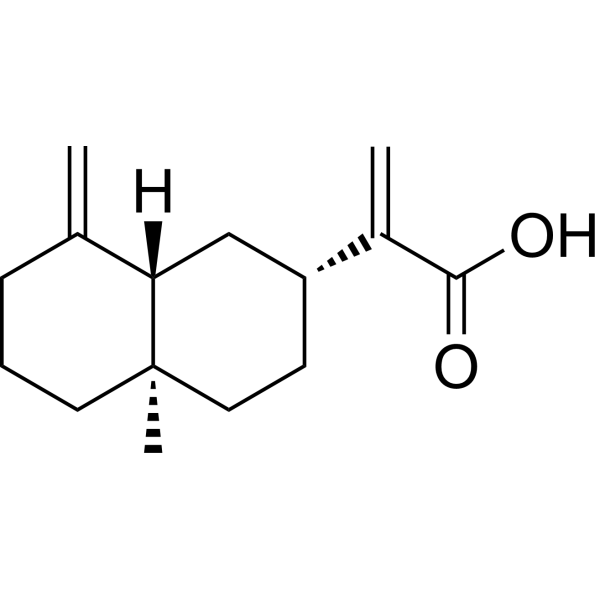
beta-Costic acid
CAS No. 3650-43-9
beta-Costic acid( —— )
Catalog No. M30950 CAS No. 3650-43-9
The use of costic acid and other components from the plant Dittrichia viscosa (Greek: aconiza) and related species for the preparation of acaricidal products used against the acari Varroa destructor as parasite of the honey bee.
Purity : >98% (HPLC)
 COA
COA
 Datasheet
Datasheet
 HNMR
HNMR
 HPLC
HPLC
 MSDS
MSDS
 Handing Instructions
Handing Instructions
| Size | Price / USD | Stock | Quantity |
| 50MG | Get Quote | In Stock |


|
| 100MG | Get Quote | In Stock |


|
Biological Information
-
Product Namebeta-Costic acid
-
NoteResearch use only, not for human use.
-
Brief DescriptionThe use of costic acid and other components from the plant Dittrichia viscosa (Greek: aconiza) and related species for the preparation of acaricidal products used against the acari Varroa destructor as parasite of the honey bee.
-
DescriptionThe use of costic acid and other components from the plant Dittrichia viscosa (Greek: aconiza) and related species for the preparation of acaricidal products used against the acari Varroa destructor as parasite of the honey bee.
-
In Vitro——
-
In Vivo——
-
Synonyms——
-
PathwayOthers
-
TargetOther Targets
-
Recptor——
-
Research Area——
-
Indication——
Chemical Information
-
CAS Number3650-43-9
-
Formula Weight234.3
-
Molecular FormulaC15H22O2
-
Purity>98% (HPLC)
-
Solubility——
-
SMILES——
-
Chemical Name——
Shipping & Storage Information
-
Storage(-20℃)
-
ShippingWith Ice Pack
-
Stability≥ 2 years
Reference
molnova catalog



related products
-
Ampreloxetine hydroc...
Ampreloxetine hydrochloride (TD-9855 HCl) has anti-inflammatory activity and is a potential compound for the treatment of depression and Alzheimer's disease.
-
Cephalandole B
cephalandole B, an indole alkaloid isolated from cyanide, significantly inhibited IL-17A gene expression and suppressed IL-17A luciferase reporter in Jukat cells in a dose-dependent manner.
-
Doripenem Hydrate
Doripenem monohydrate is a new member of the carbapenem class of beta-lactam?antibiotics?with broad-spectrum coverage of Gram-positive, Gram-negative and anaerobic pathogens.



 Cart
Cart
 sales@molnova.com
sales@molnova.com


